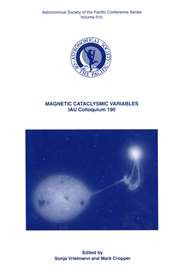No CrossRef data available.
Article contents
Missing Levels and Lines of Astrophysical Importance
Published online by Cambridge University Press: 12 April 2016
Extract
The purpose of this paper is to make a brief survey of the knowledge of iron group elements as concerns energy levels and transition arrays in neutral and singly ionized atoms and to give rough predictions of missing levels and lines. The amount of data that have been published for these elements after the edition of the Multiplet Tables are considerable. For detailed information about sources of new data and compilations the reader is referred to the Report from Commission 14 in the Transactions of IAU. In this paper we will focus on still missing energy levels and associated missing transitions, which have to be considered in the construction of synthetic spectra.
The structure of the iron group elements is complex not only because of the filling of the 3d shell but also because of the competition in binding energy between the 3d- and the 4s electron. For a given number of valence electrons, k, we have to consider three different low configurations in the complex (3d + 4s)k having about the same energy in neutral and singly ionized atoms. In neutral atoms the 3dk−2 4s2 configuration generally occupies the ground state, while the 3dk configuration appears at rather high excitation energy. In the singly ionized atoms all three configurations have about the same energy, giving the most pronounced complexity.
- Type
- Section I - Theoretical Considerations
- Information
- Copyright
- Copyright © Reidel 1986


